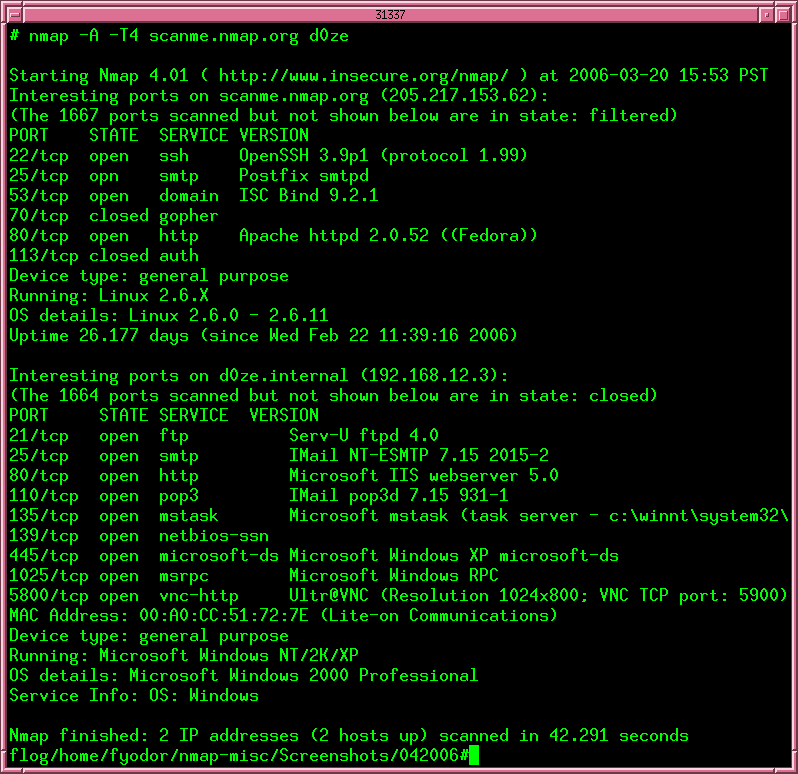

👉 Part 5 – Nmap on Windows NSE Scripts Overview 👀 This Tutorial has some related Articles!

Note: If you want to use Nmap on Windows without the need of installing bare-metal Linux or a virtual machine utilizing the power of WSL 2, we have an entire tutorial series covering how to do that.

In Linux and Unix, the default storage location is the /usr/share/nmap/scripts subdirectory while in Windows, the default location is C:\Program Files\Nmap\scripts. You can even download a third-party custom-made script that can run with Nmap. These Nmap scripts are written in the LUA programming language and named with the extension. Vulnerability Exploitation: Exploits the significant and common vulnerabilities on the go.Malware Detection: Having the capability to discover trojans and worm backdoors.Vulnerability Detection: Checks for the vulnerability of services accordingly to their functionalities and versions.Bruteforce: Can discover the authentication mechanism in the service and brute forces it with a Nmap script.Advanced Version Detection Capability: Complex probing to detect the version of the target.Enhanced Network Lookup: WHOIS lookup, Traceroute, Samba file share discovery, and additional protocol queries.The Nmap Scripting Engine extends the capabilities of Nmap which enables it to perform a variety of operations and report the results of Nmap scripts with regular output. In this article, we will go more deeply into Nmap and explore that Nmap is not just a port scanner that only scans ports on the target machine, but it contains a Nmap Scripting Engine (NSE) which has pre-made Nmap scripts to dig further into the system. Now that you know how to work with Advanced Nmap commands as shown in the article on Advanced Nmap Commands we now can go ahead and tackle the next topic.


 0 kommentar(er)
0 kommentar(er)
